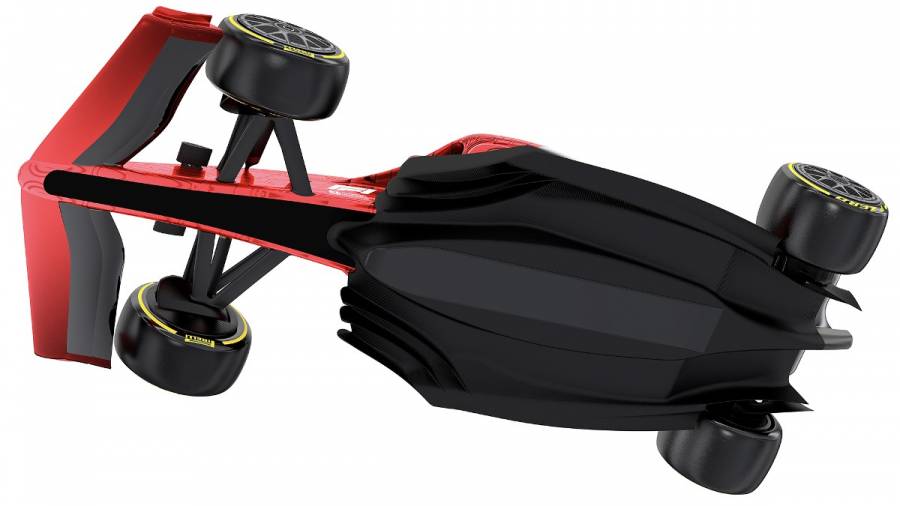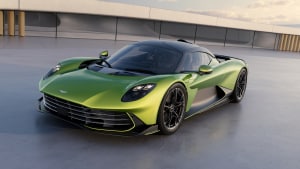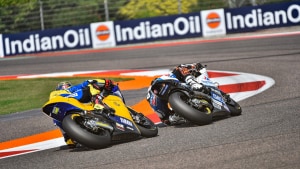Ground effects and porpoising
Ground effects are back in F1! But hold on - it's not all celebrations just yet. Porpoising, a word which has suddenly become a headache for almost all teams in early testing. What is porpoising? Well, it is the up and down motion, or oscillation, made by a dolphin-like aquatic mammal called the porpoise as it moves through the water. New-era F1 cars, for some reason, are mimicking this motion under power down the straights. According to experts, this is due to an aerodynamic phenomenon called ground effects which is making its return after almost 40 years of absence in F1. To understand porpoising, we need to understand ground effects first.

We all know that up until the season-ending 2021, F1 cars relied solely on their wings (forward and rear) to generate necessary downforce. Downforce in simple terms is force generated by air flowing over the wings to press the car down on the track and generate more grip (over and above mechanical grip generated by suspension and tyres) for carrying greater speed around the fast corners and straights. Wings are essentially aerofoils that generate lift when air passes over them, as in aircraft, but in opposite direction on a racing car for obvious reasons. F1 teams have championed this method over many decades of development with their lap times unmatched by any other racing series.
Now the issue is that, these wings or aerofoils also generate lot of turbulent air (dirty air) in their wake. Till the end of the 2021 season, F1 cars were losing almost 55 per cent of their downforce due to turbulence while following another car, which made them almost undriveable. Thus closely following the car in front for long was almost impossible, which made overtaking a challenge. This made racing look more or less like a procession until FIA introduced DRS or drag reduction system to mitigate that. F1 teams, four decades ago, were going through similar issue. Back then Lotus found out the solution to all this by introducing a very novel way of generating downforce from the underbody or floor of the car, thereby reducing the dependence on wings. This is called ground effects and it works on same Bernoulli's theorem on which aerofoil or wings work.
When a race car is on track, air is flowing over its body work at high speeds. Beneath the floor, air flowing in between it and the ground (and hence the name) attains very high velocity due to very less space between them. As per Bernoulli's theorem, pressure in the area reduces where air velocity increases. This creates an area of vacuum under the floor of the car. Due to this, air with lesser velocity and greater pressure on top of the car presses the whole bodywork down (downforce). This increases the aero grip of the car many times over and cars can negotiate high speed corners at phenomenal speeds. Interestingly, as the velocity of air under the floor of the car increases so will the downforce. The underbelly in ground effect cars is specially designed with tunnel shapes, fins and diffusers to stream line and accelerate air flowing between them even more. In essence, the whole bodywork of the car now acts like a wing. It is claimed that wake turbulence due to ground effect is much less severe, which is helping 2022 cars to retain about 86 per cent of their downforce while following one another. Thus making closer racing possible and increasing their entertainment quotient.
This is where porpoising makes an entry. See, as the speed of the car increases, high downforce due to ground effect presses the whole car down on the track. This reduces the gap between floor and ground which again increases the velocity of air flowing between them, thus again increasing downforce. This is same as squeezing the end of water hose to increase the velocity of stream coming out of it. This keeps on happening until downforce is so high that the underbelly almost touches the ground. This is called stalling, i.e. the velocity of air flowing underneath the floor suddenly stops which results in sudden loss of downforce. As a result the car jumps up and with it the air gap between floor and ground increases. This is the time when ground effect kicks in again pressing the car down, and the cycle repeats. The oscillation as a result of switching on and off of ground effect is called porpoising.
Porposing induces an undesirable effect both on man and machine. The driver can lose control of the car when this is happening at high speeds which may result in accidents and in the worst-case scenario, fatalities. Also, parts of the car like the suspension and floorboard may break due to fatigue.
Is there a way out? Of course. By tweaking or redesigning the suspension, leading/trailing edge of the floor, increasing ride height and by keeping downforce in check, porpoising can be mitigated.
But the bigger question is, how did all the F1 teams miss this during the design phase itself? Well nobody missed this since porpoising is not new to F1. During 1977-1982 era, as discussed earlier, ground effect was championed by Lotus and many other F1 teams followed suit. It was banned from 1983 onwards to prevent dangerously high cornering speeds and accidents due to sudden loss of ground effect in the event of stalling. Porpoising was very much present back then.
Only that while designing the cars this time, wind tunnels and simulators couldn't properly gauge the extremities of such effect as no matter how advanced the technology is nowadays, it cannot replicate the exact conditions and nature of the track and surrounding conditions. As for ground effects, it is here to make racing closer and exciting. Porpoising is one of the challenges of a new approach taken by F1 in 2022 and it would be interesting to see how different teams deal with it.
Words: Shashank Singh














